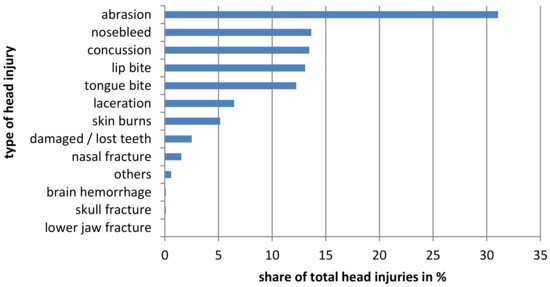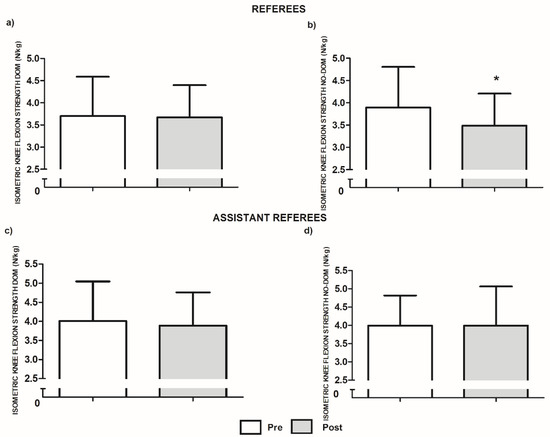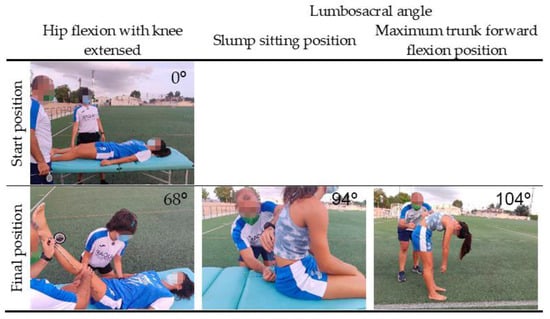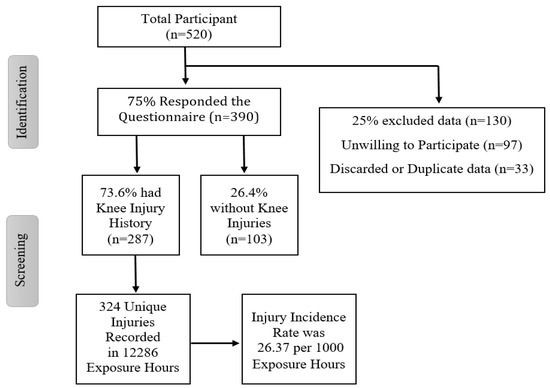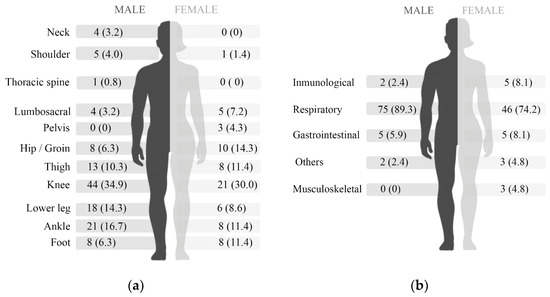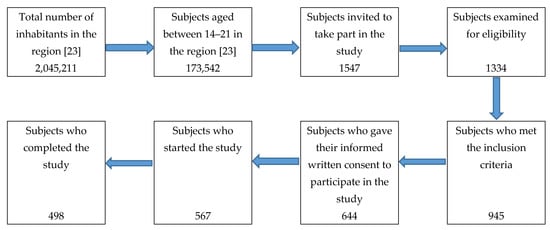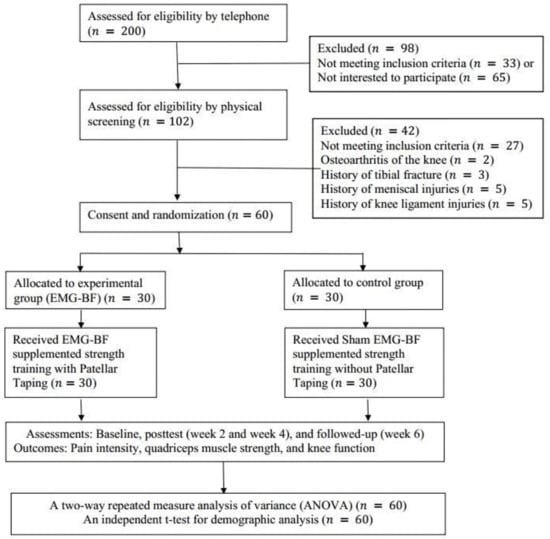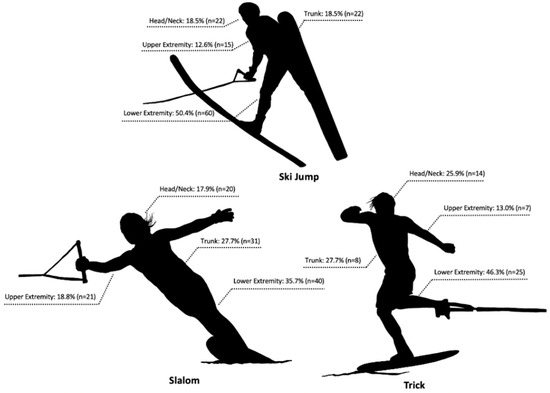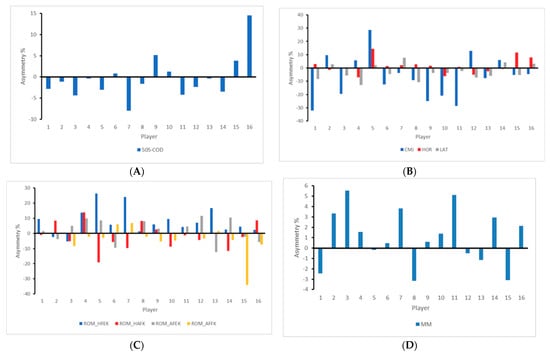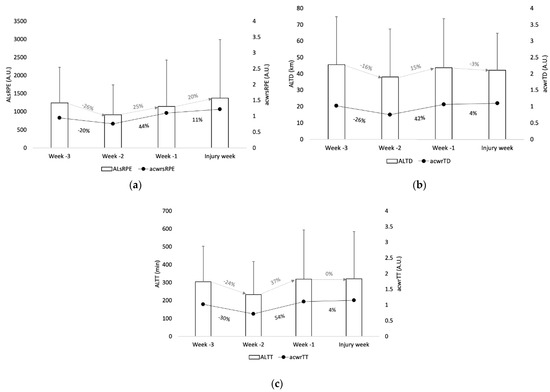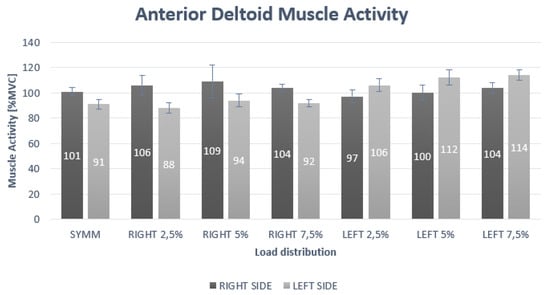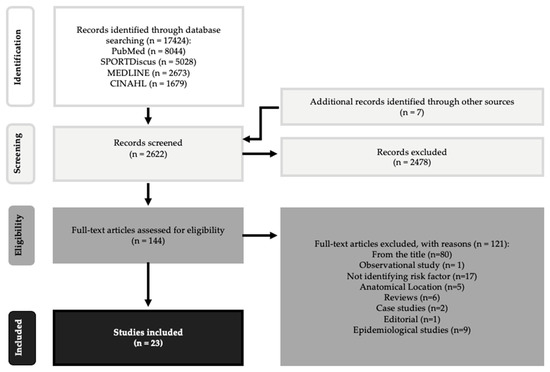Injuries in Sports: Epidemiology, Identification, Prevention, Treatment, and Return to Play (Closed)
A topical collection in International Journal of Environmental Research and Public Health (ISSN 1660-4601).
Viewed by 97826Editors
Interests: football; soccer; match analysis; performance analysis; network analysis
Special Issues, Collections and Topics in MDPI journals
Interests: physical performance; external loads; training-related fatigue; match load monitoring; contextual factors; sports injuries; team sports
Special Issues, Collections and Topics in MDPI journals
Interests: match demands; training load; monitoring; team sports; soccer; sport injuries, injury prevention; strength and conditioning
Special Issues, Collections and Topics in MDPI journals
Topical Collection Information
Dear Colleagues,
A growing body of literature demonstrates the importance of assessing and reporting the prevalence of injuries to get important feedback for the better identification of injury mechanisms with the aim of implementing more appropriate preventive protocols or rehabilitation processes. Therefore, epidemiology, identification, treatment, return to play, and prevention are hot topics in sports injuries that should be continuously updated in an attempt to decrease the exposure to injury risk and decrease the time from injury to full recovery. Moreover, peripherical covariables that may contribute to injury occurrence as fitness status, congested schedules, load management, nutrition, sleep, and recovery are also topics that appear related to injury reports. Therefore, our Special Issue seeks submission that adopt multidimensional approaches in helping practitioners and scientists to decrease injury risk, accelerate the identification of injuries, implement better rehabilitation protocols, and employ individualized training protocols for return-to-play and injury prevention. Considering that more research should be done and published about such important topics, the aim of the Special Issue “Injuries in Sports: Epidemiology, Identification, Prevention, Treatment, and Return to Play” is to publish high-quality original investigations, narratives, and systematic reviews in the field of team sport injuries. We look forward to receiving contributions related (but not limited) to the following topics: (i) epidemiology of sports injuries in youth, adult, recreational, and elite athletes; (ii) identification of injury mechanisms; (iii) evidence-based treatments; (iv) return-to-play programs; (v) strength and conditioning programs for injury prevention or return to play; (vi) load management and relationships with injury occurrence and risk; (vii) physical status and its impact on injury; and (viii) recovery dimensions (e.g., sleep, nutrition, supplementation, rest) and their impact on injury. We would welcome papers related to evidence of successful intervention strategies. All manuscripts will be peer-reviewed by experts in the field.
Dr. Filipe Manuel Clemente
Dr. Daniel Castillo
Dr. Javier Raya-González
Guest Editors
Manuscript Submission Information
Manuscripts should be submitted online at www.mdpi.com by registering and logging in to this website. Once you are registered, click here to go to the submission form. Manuscripts can be submitted until the deadline. All submissions that pass pre-check are peer-reviewed. Accepted papers will be published continuously in the journal (as soon as accepted) and will be listed together on the collection website. Research articles, review articles as well as short communications are invited. For planned papers, a title and short abstract (about 100 words) can be sent to the Editorial Office for announcement on this website.
Submitted manuscripts should not have been published previously, nor be under consideration for publication elsewhere (except conference proceedings papers). All manuscripts are thoroughly refereed through a single-blind peer-review process. A guide for authors and other relevant information for submission of manuscripts is available on the Instructions for Authors page. International Journal of Environmental Research and Public Health is an international peer-reviewed open access monthly journal published by MDPI.
Please visit the Instructions for Authors page before submitting a manuscript. The Article Processing Charge (APC) for publication in this open access journal is 2500 CHF (Swiss Francs). Submitted papers should be well formatted and use good English. Authors may use MDPI's English editing service prior to publication or during author revisions.
Keywords
- injury epidemiology
- injury identification
- injury treatment
- return to play
- injury prevention
- recovery strategies
- load management
- strength and conditioning







